#powell and pressburger
Explore tagged Tumblr posts
Text
I Know Where I'm Going...
Despite knowing the Powell & Pressburger influence on GO, I hadn't realised the episode 'I Know Where I'm Going' was named after a P&P movie! Flipping TV channels this evening, it was on BBC just as a bright eyed maid was travelling to Scotland and singing about a disreputable lover...
Aziraphale nipping up to Edinburgh, thinking about his devil dear...? So many LAYERS.

#good omens#aziraphale#crowley#david tennant#good omens finale#powell and pressburger#michael sheen#I know who I love
55 notes
·
View notes
Text
Good Omens season 2 referencing Powell & Pressburger films
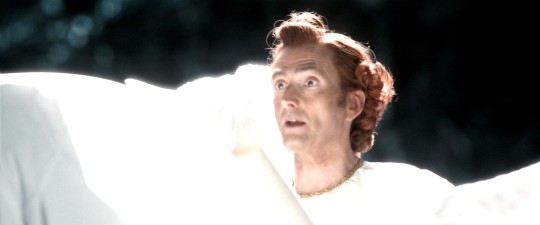

Crowley's angel hair is modeled after Kim Hunter's hair as June in A Matter of Life and Death (1946).
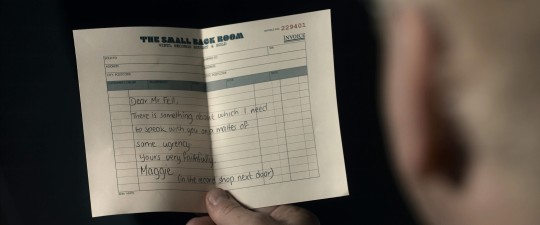
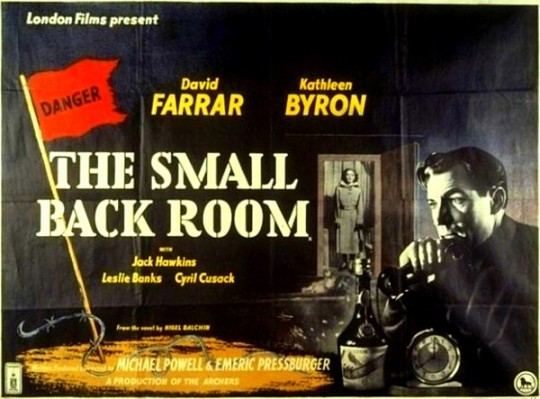
Maggie's shop is called The Small Back Room in reference to 1949's The Small Back Room.
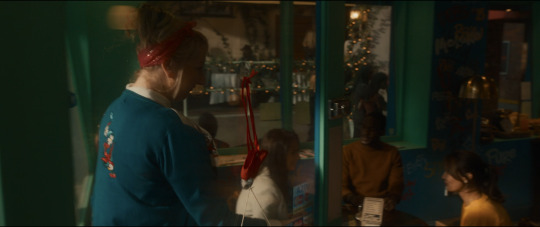
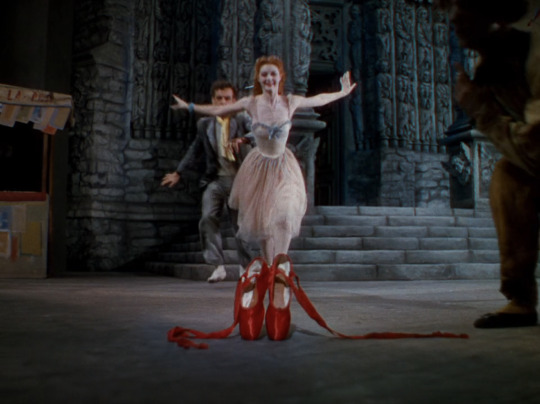
The red ballet shoes on the door of Give Me Coffee or Give Me Death are a nod to The Red Shoes (1948). (Note : the klaxons sounding in Heaven at the end of episode 1 are said to be a nod to the alarm bells in The Other World in A Matter of Life and Death. Personally, I don't think they sound at all alike; they are only similar in both being alarms. Plus, it's an audio reference, which I don't have the skill or patience to include here. But it's there!)

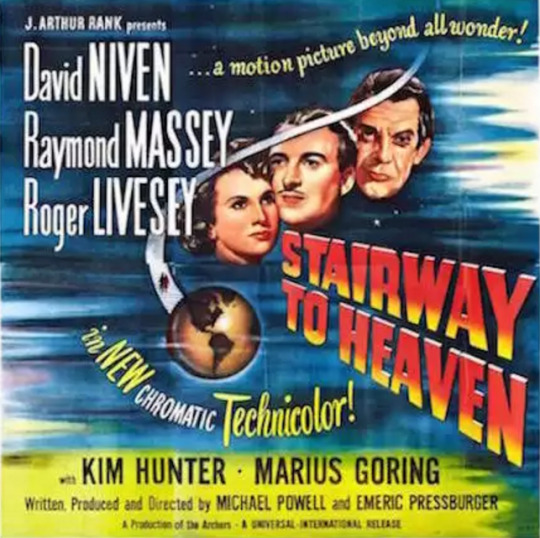
In The Small Back Room, Maggie has a poster for the film Stairway to Heaven displayed. A Matter of Life and Death was released under this title in the US.
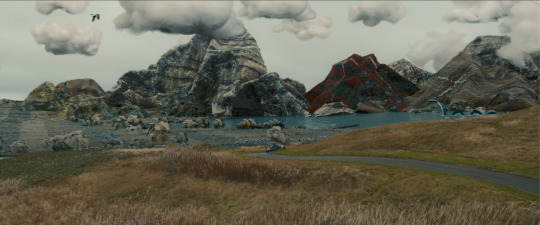

The tartan hills welcoming Aziraphale to Scotland are a reference to the tartan hills welcoming Joan to Scotland in I Know Where I'm Going! (1945). And of course, the third episode is itself titled "I Know Where I'm Going."
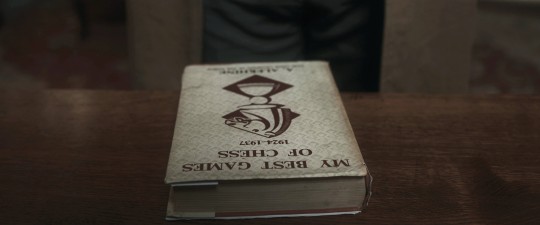
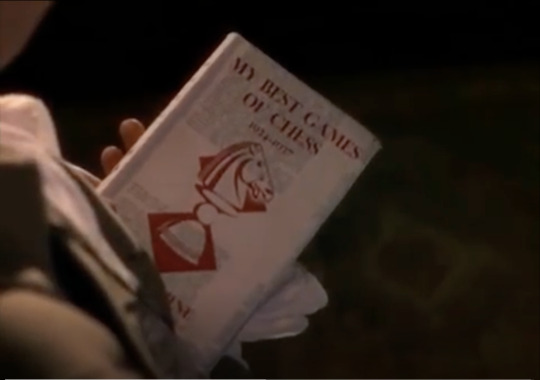
Jim drops the book My Best Games of Chess, 1924-1937, by Alexander Alekhine, onto a table in the bookshop repeatedly as he is discovering how gravity works. This book is featured prominently in A Matter of Life and Death.

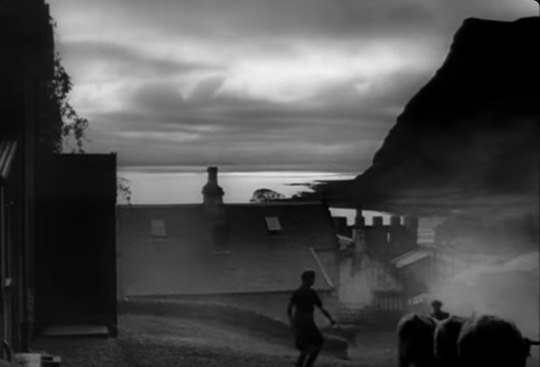
When Aziraphale enters The Resurrectionist pub in Edinburgh, I Know Where I'm Going! is playing on both televisions (I'm pretty sure I found the right scene to match this screenshot). You can also make out the name 'Pressburger' on one of the posters in this screenshot, but we'll get to that later. . .

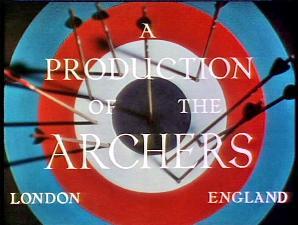
The family name on the mausoleum where Aziraphale and Crowley hide out with Elspeth and Wee Morag is Archers. It's never clearly seen in the show, but it can be seen in this BTS photo of the model used for Crowley's embiggening. The Archers was the name of Powell and Pressburger's production company. The interior of the tomb and the urns outside the full-size set also reference the Archers, and Powell & Pressburger individually.

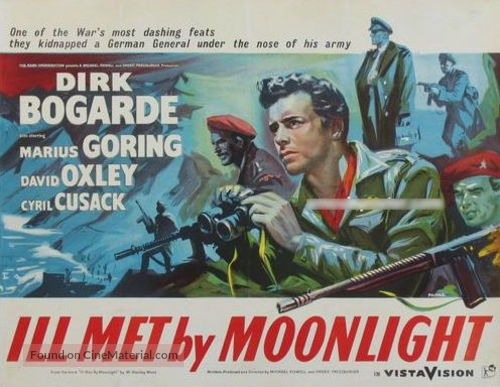
In Mr. Arnold's record shop, one of the posters on the wall is for a UK music tour; either the band or the tour is titled Met By Moonlight. This is referencing Ill Met By Moonlight (1957), the final film Powell & Pressburger made together. (I personally think this one is a reach, as the title of the film is a line from A Midsummer Night's Dream and thus not really clockable to the outside viewer as a direct Archers reference, but apparently the intent was there so we're counting it!)

The Pressburger posters are more clearly visible during the Gabriel and Beelzebub rendezvous scene in The Resurrectionists pub. We can see they advertise 'Pressburger Scottish Lager,' which is of course a nod to Emeric Pressburger himself. (Unclear if Michael Powell has his own label that we just don't get a clear view of. . .)
-- -- -- -- --
I clocked a couple of these myself, but they are all referenced in the X-Ray trivia on the Prime Video player. Would love to know if anyone has clocked anymore that aren't divulged. . .
#as a side note : please watch a matter of life and death#it is exquisite as a film and also very relevant to gomens interests#it's on youtube!#good omens#powell and pressburger#the archers#a matter of life and death#the small back room#the red shoes#i know where i'm going#ill met by moonlight
316 notes
·
View notes
Text


Sensible caption: David Niven, Kim Hunter, Roger Livesey and cast members behind the scenes of A Matter of Life and Death [P&P, 1946] - archive footage from Made in England: The Films of Powell and Pressburger [David Hinton, 2024 - with Martin Scorsese].
My inner monologue: ROGERRRRRRRRRRRRRRRRRRRRRRRRRR
Also my inner monologue: Niv you are an adorkable human you massive goofball OH DEAR GOD LOOK ROGER FRESH ROGER NEW TO ME ROGER IN REAL LIFE LAUGHING AND BEING HIS BEST SELF
#my inner monologue has a lot of feels about#roger livesey#I had FITS in the cinema at this moment I tell you#and have been waiting for it to become digital so I could gif it#ANYWAY this entire film is great and definitely worth watching#but I am just here on#roger livesey thursday#to say#ROGERRRRRRRRRRRRRRRRRRRRRRR king of my HEART#my wee gifs#powell and pressburger
64 notes
·
View notes
Text



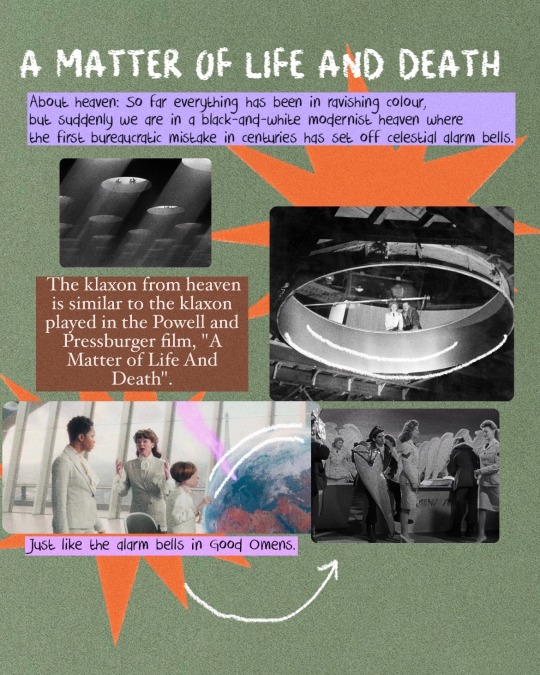

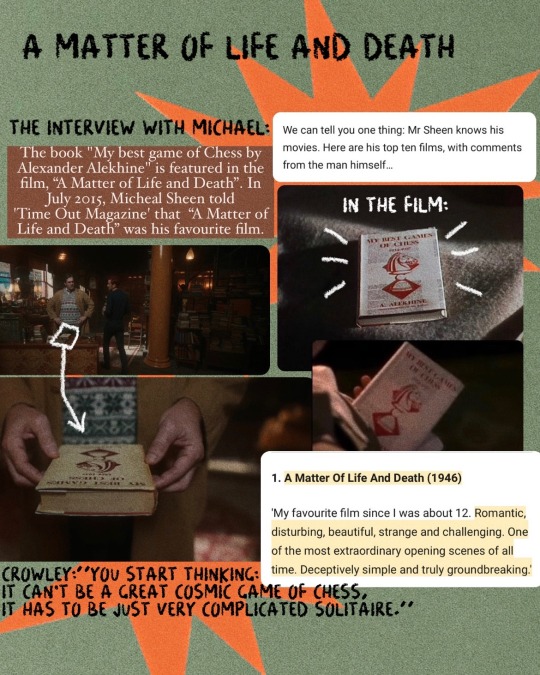

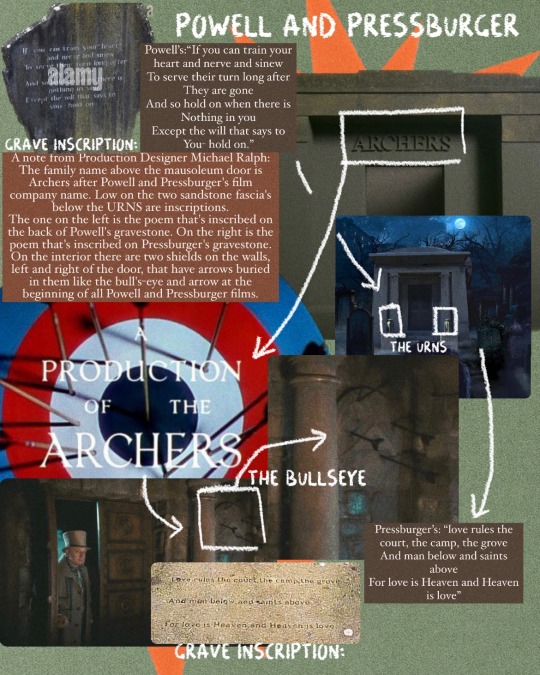


Powell and Pressburger easter eggs in Good Omens.
I gathered all of those mentioned within the trivia section of Prime. I also added all the possible behind the scenes posters, even went ahead and looked for the grave inscriptions on the tombs of Powell and Pressburger. Go on and read them, they’re beautiful. “For love is heaven and heaven is love”.
There is an extra slide I’ll add in the reblogs because I can’t put it here.
Who were Powell and Pressburger?
The British film-making partnership of Michael Powell (1905–1990) and Emeric Pressburger (1902–1988)—together often known as The Archers, the name of their production company—made a series of influential films in the 1940s and 1950s.
Their collaborations—24 films between 1939 and 1972—were mainly derived from original stories by Pressburger with the script written by both Pressburger and Powell. Powell did most of the directing while Pressburger did most of the work of the producer and also assisted with the editing, especially the way the music was used. Unusually, the pair shared a writer-director-producer credit for most of their films.
#good omens#crowley#aziraphale#ineffable husbands#neil gaiman#terry pratchett#good omens fun facts#good omens 2#easter eggs#powell and pressburger#the red shoes#a matter of life and death#i know where im going
141 notes
·
View notes
Text
For Powell and Pressburger’s A MATTER OF LIFE AND DEATH (1946)





34 notes
·
View notes
Text

30 notes
·
View notes
Text
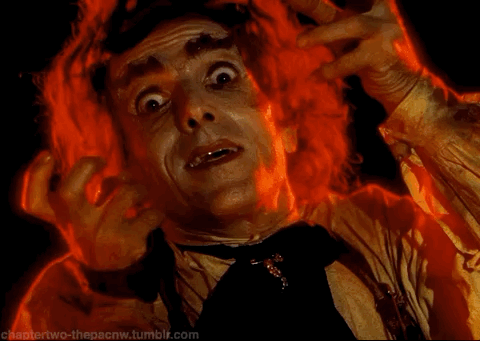
74 notes
·
View notes
Text
I Know Where I'm Going
Aziraphale's Edinburgh Journey: Part 5
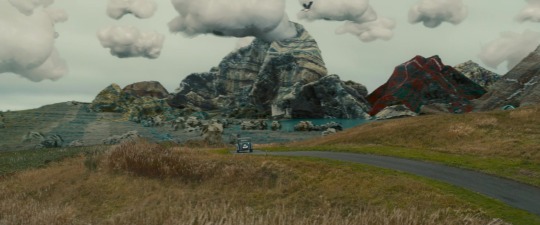
Episode 3 of S2 is named after a black-and-white 1945 Powell and Pressburger film, which is in turn named after an old Scottish folk song. It's a delightful film, which I'll discuss further below the cut, that strides headlong into the theme of fate vs free will, among other things.
This is the last major piece we need to tie things together, after starting this journey with The Clue in Episode 2, which lead Aziraphale to make the journey to Edinburgh in the first place.
Fate vs Free Will
I Know Where I'm Going, both the film and S2E3, is about not ending up where you expected to be, so this how Aziraphale went expecting to find the answer to one question, but found the answer to an unexpected question instead. So part of the problem we have is that while we end up getting the answers to two questions, one expected and one unexpected, I feel people really aren't recognizing the questions that raise them in the first place.
Not making sense? Let me describe the film.
Joan is a confident young (25yo) lady on her way to the (fictitious) Ilse of Kiloran to marry a rich older industrialist. This involves a journey by train then several ferries to the ultimate destination. However she gets stuck on the Isle of Mull, the penultimate stop, as the weather turns, and has to stay the night, then several days, as a bad gale blows.
She meets a fellow traveller, Torquill McNeil, a naval officer home on leave, who invites her up to one of the local mansions. Joan meets some of the delightful and slightly eccentric locals (the pack of goofy, soft wolf hounds of the Lady of the house, Catriona Potts, are a highlight of the film, imo) including a retired colonel who's into falconry who keeps going on about a lost golden eagle that he's training. (The eagle is a metaphor for Torquill, it turns out.)
We find out Torquill is actually the Laird of Kiloran, and he is renting out Kiloran to Joan's husband-to-be for money while he's off in the navy seeing the world. Torquill knows all the locals, and the locals know him, and they are all kind of bound together as one big happy family, in a way.
The next morning Torquill takes Joan to the hotel in another village to talk to her fiance via radio, as they still can't get to the other island. The fiance (who we never see) recommends visiting another house nearby. She does, and we find out they are also rich from new money, and care nothing about the locals and the local environment. And this is where we start learning there is a bit of divide between the old and the new, the rural out door life that is connected to the land, and the new wealth that cuts itself off from its surroundings and other people. And Joan is going to be a part of that - in her dream on the train, the same dream that gives us the tartan clad hills, she marries a corporation, not a person - so impersonal!
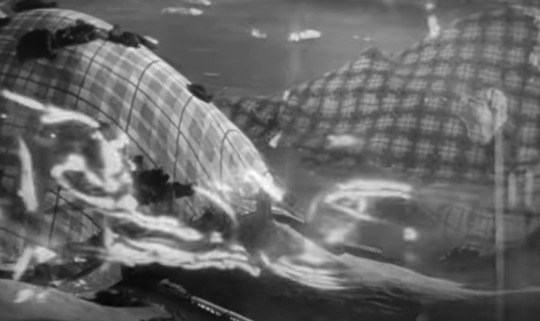
Joan is desperate to get across to Kiloran (she knows where she's going! She thinks...) After repeatedly bumping into Torquill over the next couple of days and it becoming evident there are feelings growing between them, she bribes a young local boatman to take her across to her fiance and expected marriage on Kiloran to escape this, even though the gale is still blowing strong. Torquill finds out at the last minute, and jumps into the boat with them. They get caught in a squall, and the motor cuts out. The tide drags them towards the infamous local whirlpool, and they only just escape due to Torquill's expertise.
Joan is chastened when they return to safety. That was the point of not risking the crossing in the gale in the first place, explains Torquill. They could have sent a rescue boat out if they got into trouble, but it puts more than just the rescuers at risk, it puts their families at risk, and then that extends to the whole island. Doesn't she see how the whole island is interconnected? She finally realizes how selfish she has been.
The next day dawns brightly, and the gale has finally blown out - the sea is a calm and a ferry crossing will be no trouble today. The colonel finally catches up with his golden eagle, and brings it home to roost.
Joan and Torquill say their farewells on the road, and there's a Great Big Kiss before they part and go their separate ways.
Torquill walks past the ruined castle that he is fated to be cursed if he enters as Laird of Kiloran. But he decides to risk it, and he goes in and explores the ruins, and we hear the whole story of the curse and finds that it isn't such a bad curse after all - in a metaphorical way! The next thing he hears is bagpipes - it's Joan returning up the road with the pipers that were supposed to be at her wedding. She has decided she wasn't going where she thought she was going after all and has come back to be with Torquill, her new love.
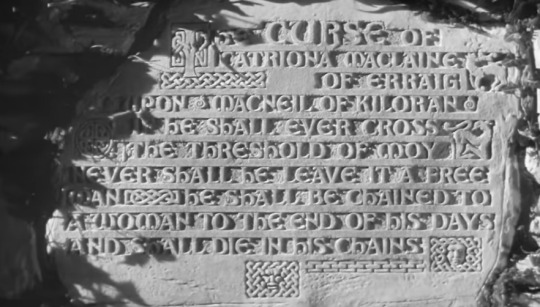
That's the basics of the story, but if you would like to watch it, I would recommend you do, as there is a lot more in it than that.
(I did watch "A Matter of Life and Death/Stairway to Heaven" before finishing this post, seeing as the book that features in it also appears in S2xE3, which is the main episode around the trip to Edinburgh, but more in relation to Gabriel's situation I think. It also deals with a character trying to escape their intended fate, but they do so by attending a formal trial and pleading their case. Other ops have reviewed the film here and here if you want to find out a bit more. I wasn't as impressed with that film, sorry to say, but I will probably watch it again to reflect on certain features and points in it relevant to GO, there is a lot. And to work out which minor character a very young Sir Richard Attenborough was playing!)
Lunatic Behaviour and Lethal Traps
Some ops have pointed out that Elspeth and Wee Morag act as parallel characters to Crowley and Aziraphale. While some would argue there are various ways to interpret this, the music indicates that Elspeth aligns with Crowley and Wee Morag with Aziraphale.
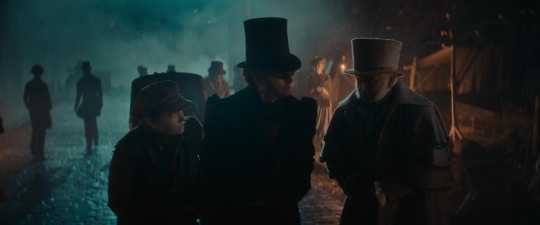
Elspeth is the one trying hard to engineer the pair's escape from the poverty trap they are in, even if it is by nefarious means. Wee Morag is the one scandalised by Elspeth's illicit actions, and concerned about doing right by Heaven. Crowley takes up Elspeth's side of the argument against Aziraphale, that its not as easy to escape poverty as one thinks (i.e. just working hard will fix things) but he also tries to warn Wee Morag that things don't work the way she thinks they do in the afterlife either.
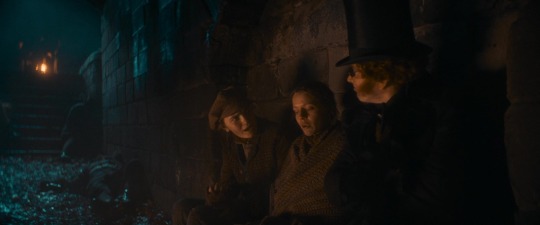
So what's the price one pays for going down the path of body snatching as an escape from poverty? You have to get past the lethal traps of the grave guns that have been set, by not tripping the wires. And again, its the wealthy privileged ones that have the advantage.
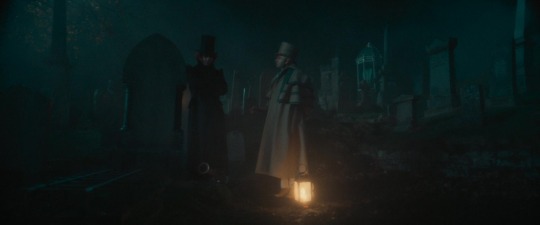
Acting in haste was a disaster. They got split up, never to see one another again. One more body may have got them out of short term trouble, but what about the long term?
Escape is a nice dream, but a harsh reality.
Elspeth was going to use the laudanum as another form of easy escape, until Crowley prevented it, then acted as a daemonium ex machina to assist her in escaping properly good, using Aziraphale's money, as that was really the only way she was going to escape for good.*
Joan tried to escape Torquill in I Know Where I'm Going, but only cast herself and her companions into danger. If she had been more patient and less selfish, she might have had everything she wanted without suffering on the way. But that wouldn't have made as good a story then, would it? And she wouldn't have gotten to know Torquill and fallen for him, either.
If Aziraphale ran away to Alpha Centauri with Crowley, like Crowley had been urging in the present, would they be free? The inference is its unlikely, that they wouldn't be able to escape their own "poverty trap," the alarms would be raised, and the trouble they caused would be too deep to pull themselves out of. Luck hasn't been on their side so far.
The View from Above
By now we should be alert to characters trying to avoid their fate, or perhaps ending up in places they weren't intending to. Fate has a weird way of biting you on the backside, as the trope goes.
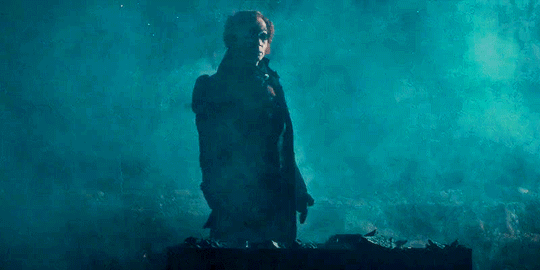
Giant Crowley did end up somewhere he wasn't intending to be, and perhaps accidentally ended up playing God and deciding Elspeth's fate. There are mentions of angels as tall as mountains, or tall as the sky in the Bible, so him ordering Aziraphale to give all his money to Elspeth while looking down at them shouldn't really be out of place for those familiar with the book. Crowley also took Elspeth's fate into his own hands when he snatched the laudanum away from her and drank it down, an action akin to absolving her of her sins.
Aziraphale also tried to change Elspeth's and Wee Morag's fate, by changing his mind about the morality of the body snatching. That didn't end up the way he hoped or expected, either.
Mr Dalrymple was of aware of two fates he could meet, he just didn't know which one it would be at the time he was s talking to Aziraphale and Crowley.
DALRYMPLE: I either end up with a knighthood or condemned as a resurrectionist and hanging from a rope.
Sadly, we find out through Aziraphale reading the pamphlet he picked up outside the pub that it was along the lines of the second one - he might not have been actually condemned for a crime, but he condemned his own conscience and then his soul.
If you would like a contrast to this, come back to S1xE2, where we approach a young Newton Pulsifer in his bedroom, about to short out the electrical works for his whole neighbourhood yet again. God is narrating at this point, and the camera view pans down from the sky...and bumps with a visible jolt and audible noise into the window frame of his bedroom. (I wasn't able to find a GIF for this.)

Newt is a Crowley-parallel, they are both on the side of free will and choosing one's destiny. This is not a place for God, the decider of Fate, to trespass. There will be no crossing of this threshold, Frances!
I would just like to take a step back here to Part 4: Judgement Day, if I may, and reconsider this view of the missing cross in the statue of Gabriel's arms:
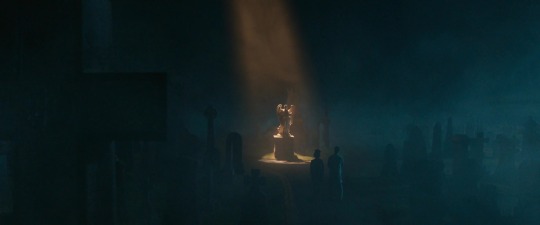
This is the only point of view that we don't see the cross from. It's still seen from between Gabriel's and Beelzebub's shoulders, and Crowley stills see it in 1826, so it's not invisible to demons.
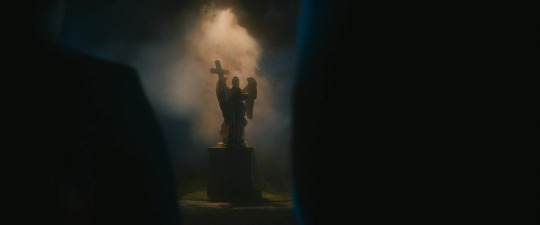
So I would like to ask, could the missing cross view be God's point of view?
The viewpoint is similar to the one in the Job minisode, as seen from where Aziraphale and Crowley are witnessing Job listen to the Almighty speak to him.

So, perhaps if God isn't seeing the cross, they aren't the one who has so-called Ineffable Plans for the Second Coming in mind.
Yeah, so there's the Great Plan, and the Ineffable Plan, but are they the same plan...and who is pushing so hard for the Great Plan to come to completion, then? Not Gabriel or Beelzebub, that's for sure.
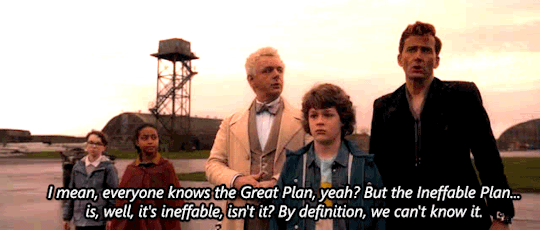
66 Goat Gate
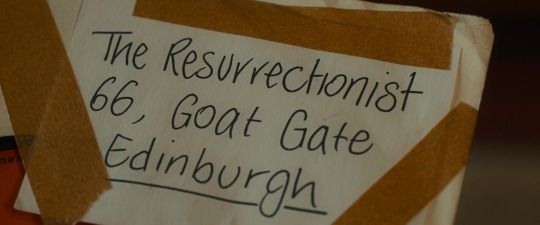
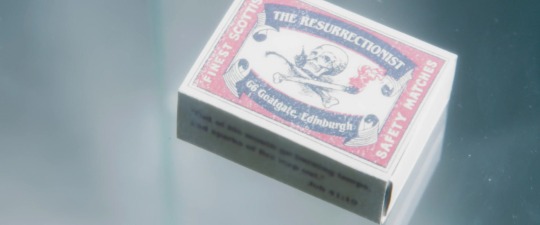
Just before we attempt to wrap things up, we should have a look at the address on the Clue, but it doesn't really tell us anything we don't already know.
We know the address of the pub in Edinburgh appears in two places, once on the record single Maggie gives to Aziraphale and once on the matchbox that held the fly. There is a difference in the way they are written, with an comma on the record, and also Goat Gate written as two words, whereas it is one word on the matchbox.
Gate was old name for a road, so one interpretation could be that it was hinting at a demon road, or an underground road (demons live in Hell, which is underground, and demons are also associated with goats) and that ties in with the resurrection and Judgement Day theme we have going on, and perhaps should alert us to the presence of at least one demon being involved with Gabriel. On the other side, a goatgate is a relatively modern term for someone who talks a load of shite, so to speak. If we use Strong's Concordance to add the 66 to it, it becomes a wild or fierce mouth. Which kind of suits the Leviathan referenced in the verse from the Book of Job. The first version then looks like a wild underground road to Hell on the way to the Second Coming (the Harrowing of Hell in the Passion, anyone?) Don't forget the number 6 is associated with Hell as well.
Piecing the Elephant Together
There is a famous parable about a group of blind men meeting an elephant for the first time. They each go up and touch a different part of the huge beast, and subsequently give a different description for each part of it, but collectively they can't describe it properly as a whole.
That's kind of how we tend to look at Good Omens - its such a huge, complicated beast of a story, with each of us picking out one strand to analyze that might be our specialty, but we don't necessarily have all the other pieces nearby to aid our understanding as to why it was placed there or what it is doing and how that aids the purpose of the story.
To sum things up:
Aziraphale's trip to Edinburgh in the Bentley is a parallel to Crowley and Muriel going to Heaven together to find out about Gabriel, but Aziraphale is actually going to Edinburgh to find out about Beelzebub (he just doesn't realize it.)
Gabriel was there in the pub, and met with a "Mason" in a regular black-coloured suit that the barman was used to seeing Masons dressed in, because he noted that Gabriel's light grey suit was different.
We are shown many clues to the looming Second Coming
We see parallel scenes to S1, which at the same time sets upparallels for S3, which are about starting Armageddon. Again.
We also gain a lot of interlinked information for other parts of S2, and parts that link up with S1 and maybe S3, such as:
Aziraphale's main parallel in S2 is Beelzebub, with Maggie a parallel blend of the two of them.
Mr Dalrymple shows us that something needs to be cut out to save the innocent, but we also need to learn what it is before we can do that.
Elspeth and Wee Morag show us that running away is not as simple an option as it seems, its more a fatal trap than anything.
The Masonic symbols appearing in S2 remind us that life and death is a cycle, but also sometimes thoughts need to be turned around.
Aziraphale thought he knew where he was going, but he didn't really; fate gave him answers that he wasn't expecting. Did he ask the right questions?
There is not just a single purpose for Aziraphale to go to Edinburgh, there were several.
I also think Aziraphale didn't have enough time to stop and think about it, or talk it through with Crowley. They both had to leap from one thing to another until it was too late.
I was going to finish this off with that quote about history repeating itself until you learn from your mistakes or something, but then I found this one:

*Slaps this beast on the backside to move it along so it can go roam free in the wilderness.*
*This is actually something that is well researched but not well known, and is called the Success Paradox. You can watch a good explanation of it by one of my favourite science vloggers Veratisium here. Women are probably most aware of it intuitively, because of inherit sexism in our patriarchal society, but it also exists in the attitude "if you work hard you can make anything happen." What most people don't realize is how much luck factors into their success. Lucky they were born into a wealthy family. Lucky they met the right person on the right day. Lucky they were chosen over another etc. Before you argue otherwise, do stop and think about it.
The other posts in this series can be found here:
Part 1: Detective Aziraphale Part 2: Aziraphale-Beelzebub Parallels Part 3: Stocktaking in the Basement Part 4: Judgement Day
#good omens#good omens 2#good omens meta#i know where i'm going#fate vs free will#powell and pressburger
55 notes
·
View notes
Text
Good Omens: A Matter of Life and Death
Easter eggs and references! We know from the obvious placement of the movie poster in the title sequence and Maggie's shop (and even from Neil's asks) that inspiration was drawn from this movie.


I'm not going to dive deep into a lot of meta connections, but I wanted to share some of the parallels. For a great summary of the movie (A Matter of Life and Death aka Stairway to Heaven by Powell and Pressburger) and some general info relating it to Good Omens pop over to this article. This will contain some spoilers for the movie - now on with the show!
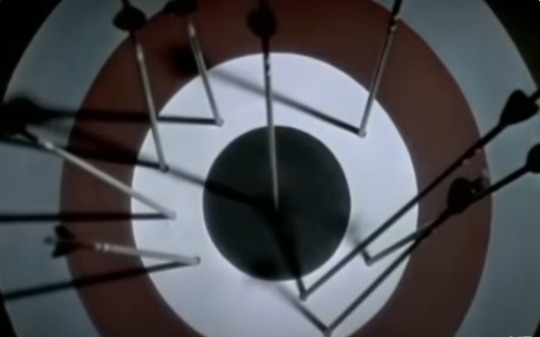
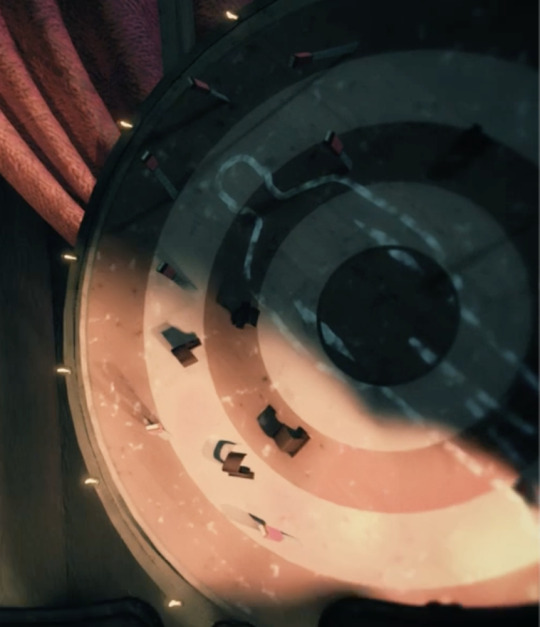
This one is before the movie even starts - The Archers is the production company of Powell and Pressburger - their target logo looks a lot like the one in the magic show portion of the title sequence.


We open in space - looking at stars and supernova, talking about the big, expansive universe. Fascinating how our view of the cosmos has been changed by modern telescopes (Crowley is so proud).
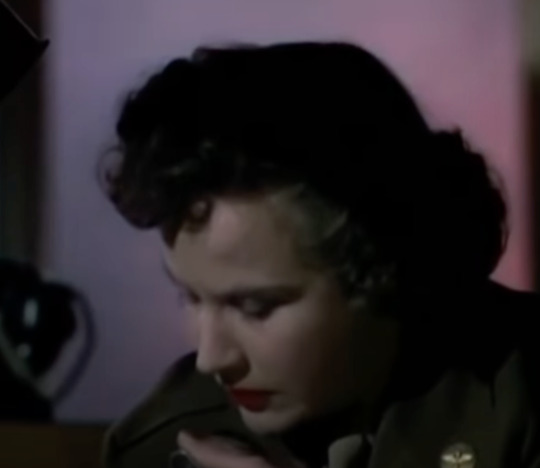

June (our heroine) is an American radio operator and picks up British squadron leader Peter's plane as he is crashing into the channel. They form an instant connection. Her hair was the inspiration for the Starmaker's amazing do.


Peter's fellow airman dies and ends up in Heaven, waiting for him. The angel administrators are very serious, very organized, very well dressed, and Heaven as a whole is colorless.
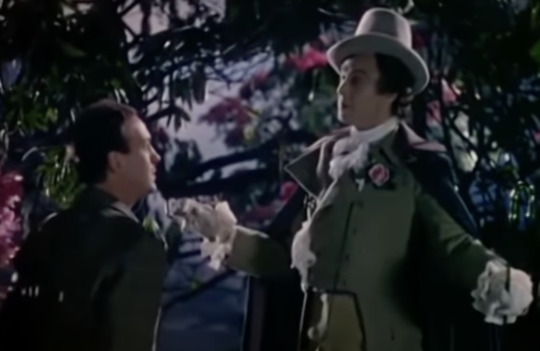

But Peter doesn't die - in fact he washes up on the beach near June, where they meet and immediately fall in love. Conductor 71 (the heavenly employee who was meant to collect Peter but lost him in the fog) is sent to convince him to come to Heaven, stopping time and freezing June to have a conversation with Peter.
I'll stop here to keep this from getting too long... More to come?
#good omens#good omens s2#good omens parallels#powell and pressburger#a matter of life and death#good omens easter eggs#good omens references#good omens 2#gos2#gomens#a duck talks#stairway to heaven#filmmaking#good omens meta
120 notes
·
View notes
Text


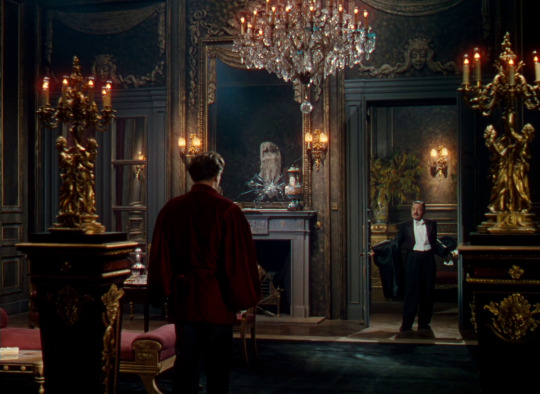
This room though…
The Red Shoes (1948)
#the red shoes#anton walbrook#technicolor#old hollywood#british film#the archers#emeric pressburger#michael powell#powell and pressburger#interior design#classic film#decade: 1940s#1940s cinema#1940s film
597 notes
·
View notes
Text





Made in England: The Films of Powell and Pressburger (2024)
#powell and pressburger#the life and death of colonel blimp#i know where i'm going#a matter of life and death#black narcissus#the red shoes#film#1940s#screencaps
33 notes
·
View notes
Photo

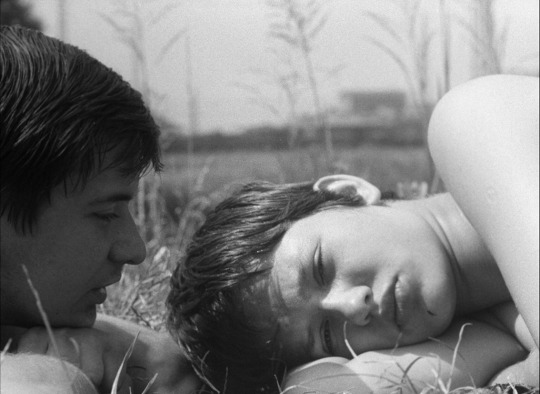

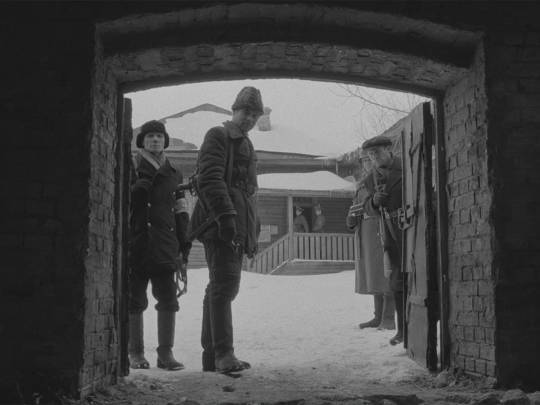


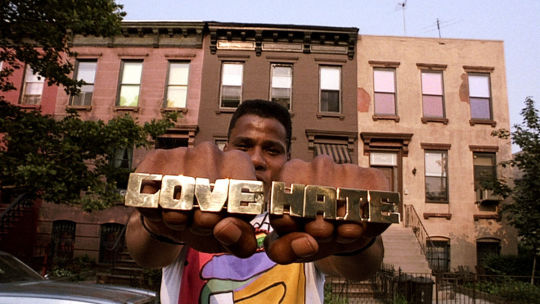


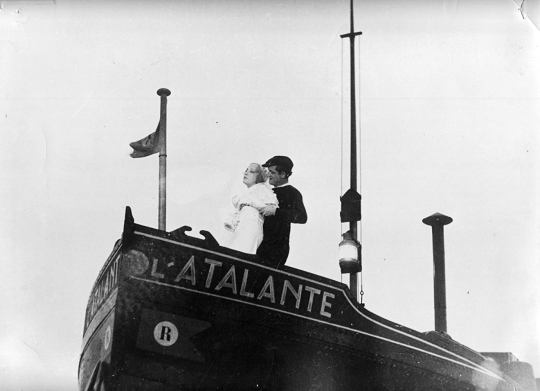
Favorite films watched for the first time in 2023:
The Long Farewell (1971), dir. Kira Muratova
Black Peter (1964), dir. Milos Forman
Providence (1977), dir. Alain Resnais
The Ascent (1977), dir. Larisa Shepitko
Death in Venice (1971), dir. Luchino Visconti
Black Narcissus (1947), dir. Michael Powell and Emeric Pressburger
Do the Right Thing (1989), dir. Spike Lee
Pather Panchali (1955), dir. Satyajit Ray
Loving Couples (1964), dir. Mai Zetterling
L’Atalante (1934), dir. Jean Vigo
#w23*#2023 in films#films of 2023#the long farewell#kira muratova#black peter#milos forman#providence#alain resnais#larisa shepitko#the ascent#death in venice#luchino visconti#black narcissus#powell and pressburger#do the right thing#pather panchali#loving couples#spike lee#satyajit ray#mai zetterling#l'atalante#jean vigo
86 notes
·
View notes
Text

35 notes
·
View notes
Text



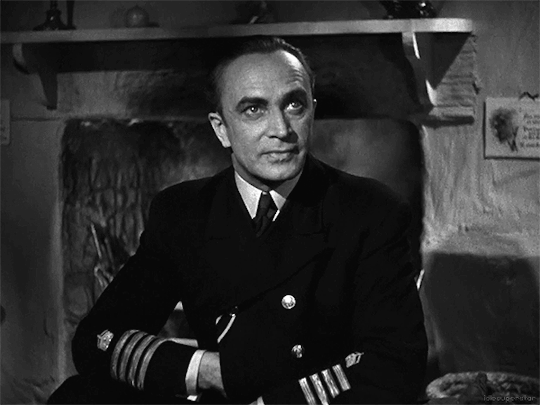

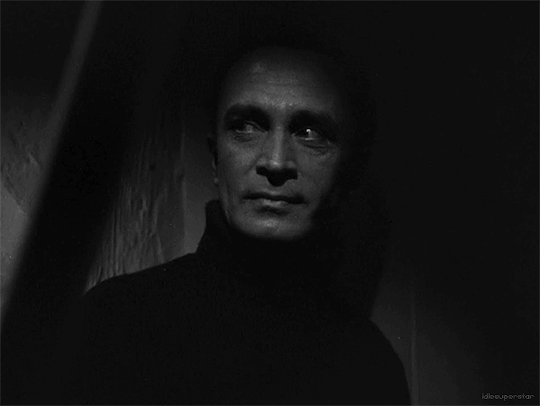



Conrad Veidt as Captain Hardt in The Spy In Black [Powell & Pressburger, 1939]
#conrad veidt#powell and pressburger#BUTTER#adventures in cinemagoing#so I got to see this on the big screen last night for the first time#thanks to the bfi sending their P&P stuff round the country#not watched it for AGES and had forgotten loads#my pals who came with enjoyed very much which was pleasing#I have never fancied connie but I do love him#and the swagging through the doors entrance is extremELY COOL#also had forgot what boyfriends he and marius are#very interesting to note that in the more histrionic moments he reminds me of anton when he's being histrionic#also him creeping around the boat at the end is just one great audition for a british made dracula with connie as the count#I mean why did that not happen#my wee gifs#look at me actually making gifsets
112 notes
·
View notes
Text

When I was a teenager I used to really like doing screencap redraws in ink or pencil where I could only shade in one direction, and I thought it would be fun and a good challenge to try it in lino. This is an A4-sized print of a still from "A Canterbury Tale" (1944), a Powell & Pressburger film which gets right in amongst me.
#linocut#relief print#blockprinting#printmaking#a canterbury tale#powell and pressburger#john sweet#sheila sim#dennis price#very “the gang survives ten minutes in a train compartment with eric portman”#(there's a ridiculously high-quality restored version of this available on youtube btw)
19 notes
·
View notes
Text







Pamela Brown knows what you're up to.
#pamela brown#i know where i'm going#michael powell#emeric pressburger#powell and pressburger#roger livesey#margot fitzsimons#gif#reaction gif
21 notes
·
View notes